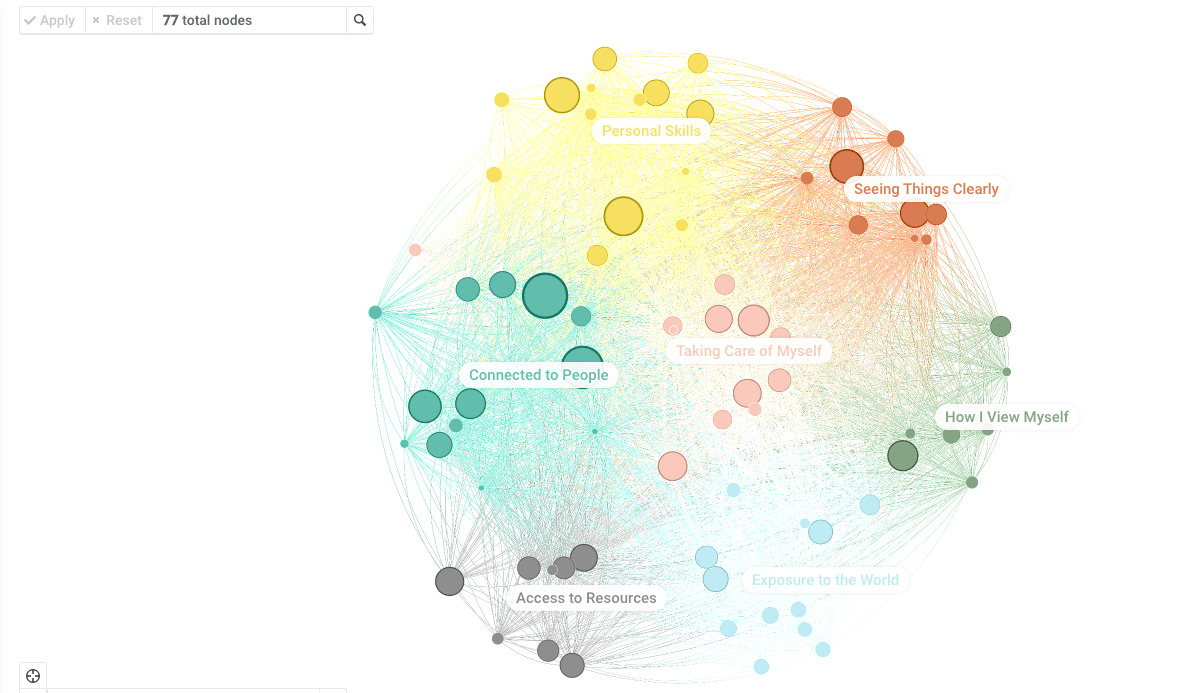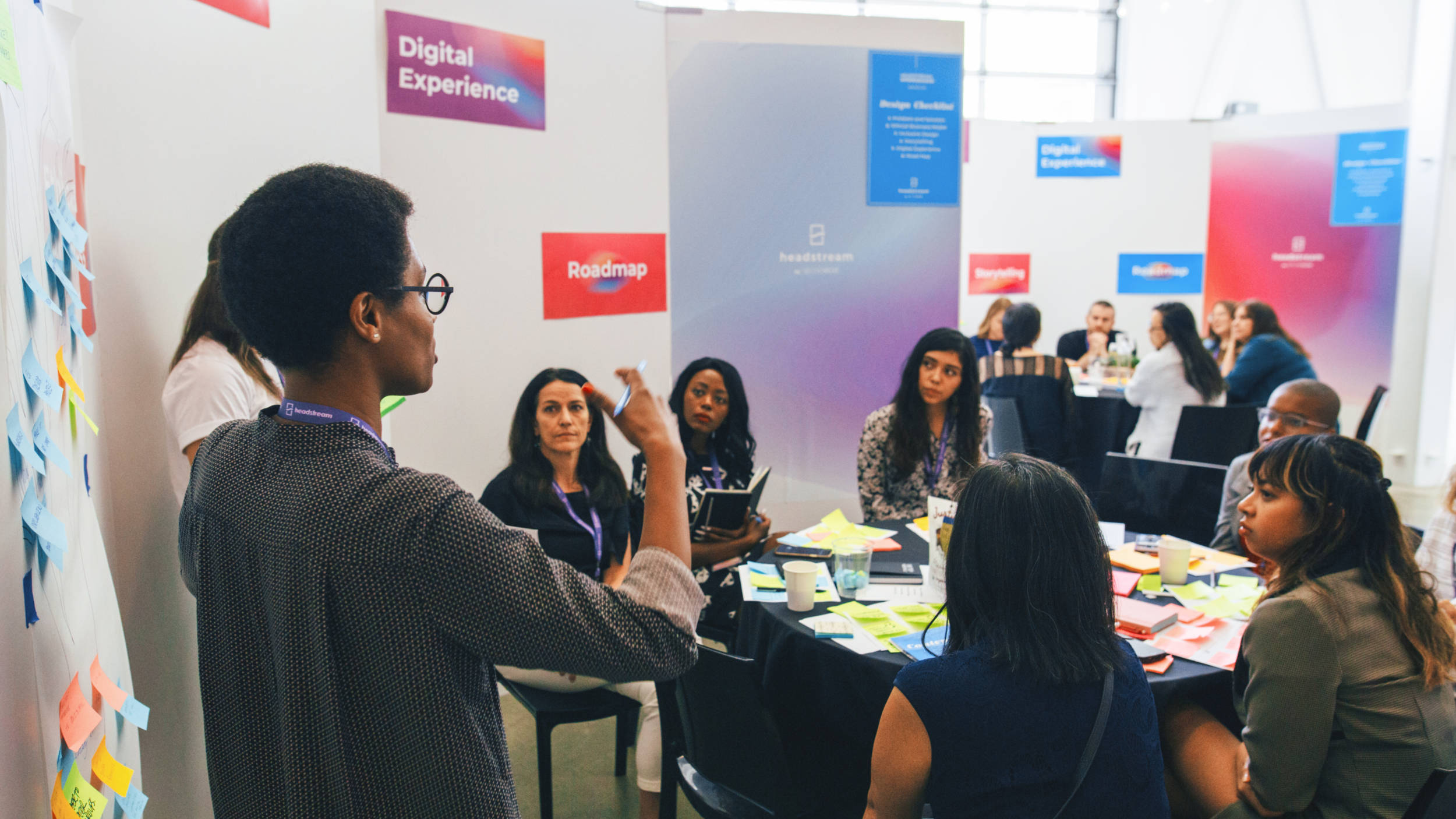Headstream’s crowdsourced research tool identifies the most important drivers of adolescent wellbeing in the digital places where teens and young adults are coming of age.
While decades of research have solidified the most important drivers of youth wellbeing in real life (like a safe and stable home environment as well as access to healthcare and nutritious food) much less is known about the drivers of youth wellbeing in the digital world. To fill this gap, last year our program, Headstream, unveiled Digital Delta, a crowdsourced research tool that identifies fundamental contributors to adolescent wellbeing in digital spaces. The tool offers adolescent-focused entrepreneurs and anyone else interested in fostering youth wellbeing clear direction on where they should focus their efforts.
The tool was created based on the realization that digital platforms were not designed with youth wellbeing in mind by developers who, by and large, are not representative of the end users—young people from diverse backgrounds. Digital Delta was developed to serve not only conscientious innovators who want to make sure their products are benefitting young people and not unintentionally causing harm, but also investors and institutions looking for a research-based approach to making digital places safer for young people. The Headstream Team wanted to provide these groups with answers to an elusive question: Which factors, if improved, could have the biggest cascading positive impact on youth wellbeing? In other words, in a complex and imperfect digital world, where are the most promising areas for improvement?
To answer this question, Headstream researchers surveyed more than 800 people working to improve youth wellbeing from their community of entrepreneurs, innovators, young people, investors, researchers, policy makers, educators and tech builders. 55% of respondents identified as female, 54% identified as Black, Indigenous, Latinx and people of color, while 29% were LGBTQIIA+ individuals. Crucially, more than half of respondents were young people themselves.
The Headstream team analyzed responses and honed in on 13 key areas with the highest potential to impact people between the ages of 13 and 24. These 13 “catalytic factors” were then sorted into three key themes: Positive relationships, accessible resources, and balanced content.
Positive Relationships:
Researchers found that strong, prosocial relationships with parents, friends, and social groups are key drivers of youth wellbeing in digital spaces, just as they are in “real life.” The finding underscores the importance of addressing these broader needs rather than focusing on problems specific to the internet. It also drew their attention to the importance of giving teens opportunities to foster meaningful connections and form positive relationships online. Digital platforms, games, forums, tools and other spaces that address these needs, the research shows, are likely to have a positive impact on youth wellbeing.
Accessible Resources:
Another key driver of youth wellbeing, the research showed, is access to key resources – from food and shelter to broader essentials that address physical, mental, and sexual health needs. Currently, one of the most pressing needs for young people, respondents indicated, is access to mental health resources. Adolescents experiencing stress, anxiety, loneliness, and depression (or helping peers navigate these issues) often turn first to digital places for support resources. Digital places that offer them culturally-relevant resources to address these sorts of issues are also likely to have a positive impact on youth wellbeing.
Balanced Content:
Finally, researchers found that young people want balance in their online activities and interactions. They want to minimize their exposure to hateful and hurtful content and to limit the amount of negative feedback they receive. They also want to be able to control what they see online and like when platforms enable them to manage and moderate their experiences.

These findings are illustrated on Digital Delta’s interactive map, which allows anyone to explore an even broader range of factors that contribute to or erode youth wellbeing. The map makes clear where innovators, investors, educators, policymakers and anyone else aiming to foster youth wellbeing should focus their collective energy. And it offers executives, founders and others with influence over the current digital world a place to reflect on how their products are impacting young people.
The next phase of Digital Delta is to understand which innovators, companies, funders and other organizations are working on areas like positive relationships, balanced content, and accessible resources. Our goal is to identify the actors in this space who are having impacts on the primary contributors to youth digital wellbeing. Specifically, we are looking for actors leading the work to create positive digital experiences for young people in the ed-tech, digital health, and social tech sectors. To find these companies and organizations — and to identify where there is a lack of presence and funding — we are combing through databases compiled using research from prior phases to identify the prominent innovations in this ecosystem. We are then determining the most relevant industry-driven keywords and phrases and searching public databases to discover the thousands of companies and funders intertwined in this emerging market segment.
We want to share this information with the hopes of better defining the digital youth wellness landscape and understand who is being funded to lead this work. This will help us identify collaboration opportunities and gaps in the market where innovations do not yet exist. Headstream will unveil this next phase of research in the next month and will hold convenings and workshops to bring people together to better understand this funding landscape and build on it with the end goal of making the digital places where teens are growing up healthier, positive and beautiful.







